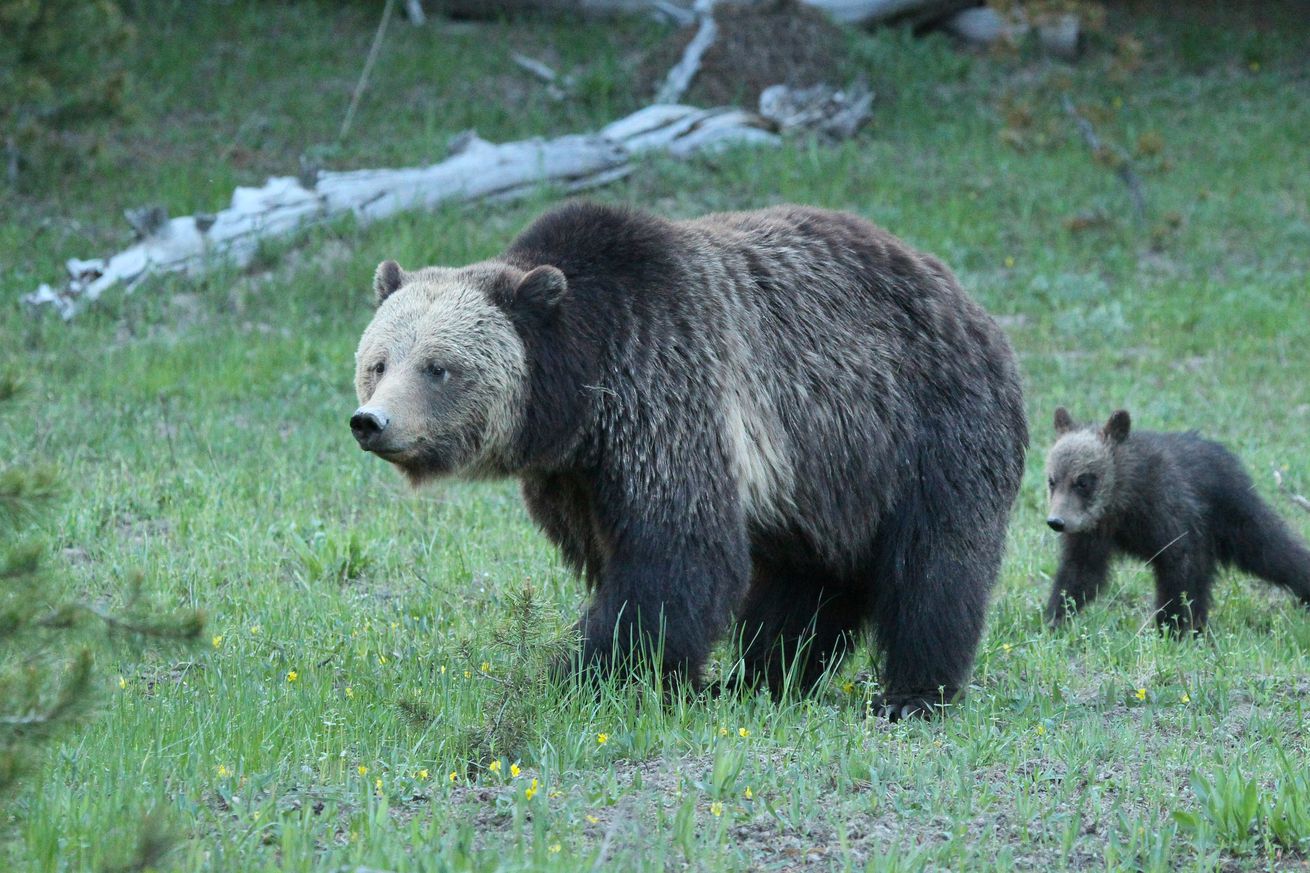
Climate change makes food scarce, but Yellowstone bears are staying fat
Yellowstone’s grizzly bears have managed to stay just as fat over the years regardless of growing environmental stressors, according to new research. Fat is life for a bear; it needs lots of fat to make it through months-long winter hibernation and have healthy cubs. That’s why scientists monitoring the bears in and around Yellowstone National Park were happy to find plump grizzlies despite some of their major food sources dwindling.
“We were kind of surprised,” says Frank van Manen, an ecologist with the US Geological Survey who leads the Interagency Grizzly Bear Study Team. Looking back on data collected on the park’s bears over 20 years, van Manen and his colleagues found that body fat levels had stayed roughly the same for bears throughout the park. Their findings were published this week in the journal Global Change Biology.
Fat is life for a bear
“[The bears] have a pretty smart life history strategy, under more challenging circumstances, of changing food resources,” van Manen says.
That was especially true for bears in the most densely populated parts of the park, which face the most competition for food from other bears. Bears in these parts, particularly young females, had somewhat lower lean body mass (aka muscle and bone) than their counterparts in more densely populated areas. Even so, these slightly smaller bears still showed the same body fat levels as any other bears in the park. So they’re healthy, even if they’re a little smaller.
Apparently, their strategy has been to prioritize calorie intake for fat storage rather than lean body mass. In other words, it seems they’re more concerned with fattening up than building muscle.
An advantage bears have when it comes to adapting to climate change and other pressures on their environment is that they’re omnivores on the move. Basically, they will spread out in search of food and can eat pretty much anything they find. The team has documented at least 260 different types of food the bears eat in the park. “That’s a pretty astonishing number of species that they’re consuming,” he says. That comes in handy, as some things they eat, like cutthroat trout and elk herds, become less abundant.
One of the biggest losses the bears have had to cope with is a staple of their fall diet: seeds from the whitebark pine tree. The trees are casualties of climate change and a bark beetle epidemic and were officially designated “threatened” under the Endangered Species Act this year. Climate change has led to more devastating wildfires wiping out forests and has also made the trees more susceptible to beetle infestation.
The bears are eating more carcasses now without as many seeds to feast on in the fall, van Manen says. This is a crucial time when bears go into hyperphagia, an eating and drinking frenzy, to prepare for winter hibernation.
Yellowstone’s grizzlies are still considered “threatened” under the Endangered Species Act. So while the new research shows how much they’ve been able to adapt, van Manen cautions that their resiliency can only be stretched so far.

